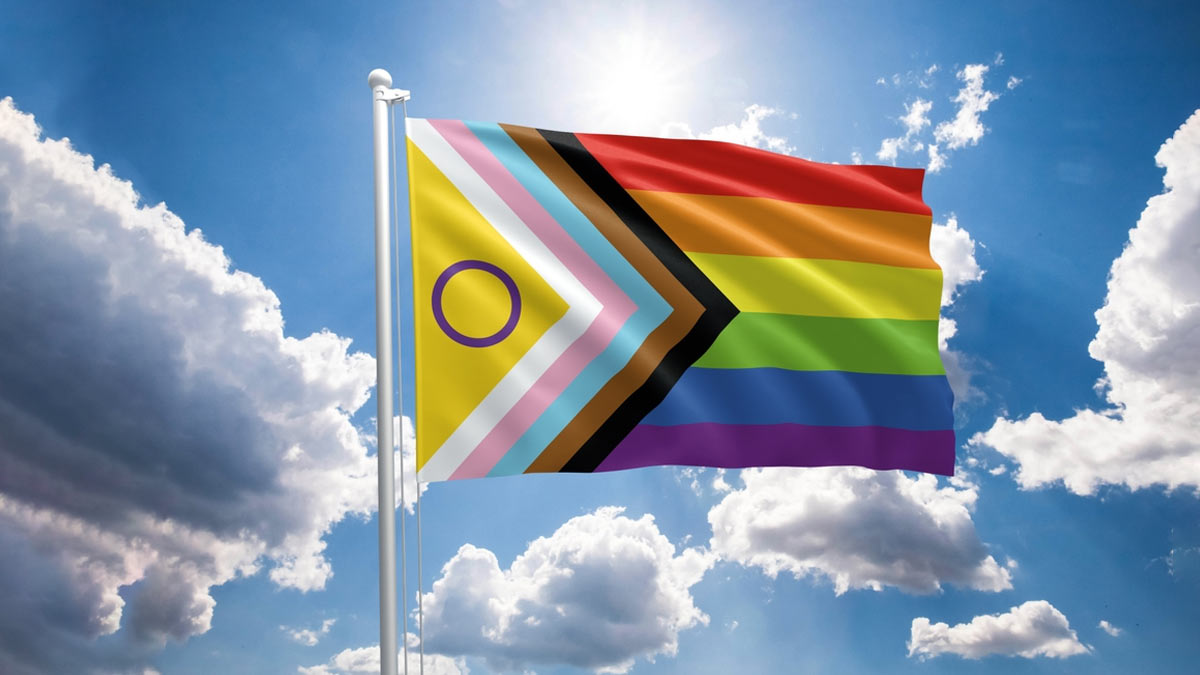
Updated Pride Flag: How New Colours Celebrate Diversity And Signify Inclusivity
June is celebrated as Pride Month worldwide. It was first recognised in the US in 1999, and since then, many countries celebrate this month to commemorate the struggles the LGBTQIA+ community has gone through.
We have noticed that the LGBTQIA+ community is denoted via a rainbow flag with colours varying from violet to red and each of them has a significance. Here is the history of how the flag got updated over time to celebrate diversity and inclusivity.
Progressive Pride Flag

Developed in 2018 by an American artist and designer Daniel Quasar (xe/xyr) who identified as a non-binary person. Xe corrected the design that was introduced by the Philadelphia City Hall in the United States. It stacked brown and black colours over the red rainbow pride flag.
This invited backlash from the community. They said that stacking new colours that were linked to identity over the colours that stood for values would degrade the message that the community has been trying to convey.
Therefore, Quasar created an arrow featuring white, pink, light blue, brown, and black stripes.
View this post on Instagram
White, light blue, and pink colours stood for non-binary and transgender people. Black and brown colours represented the People of Colour (POC). The black stripe was also added to destigmatise people from the LGBTQ+ community living with AIDS and fighting stereotypes attached to it.
1
2
3
4
Xe was quoted saying, “This new design forces the viewer to reflect on their own feelings towards the original Pride Flag and its meaning, as well as the differing opinions on who that flag really represents, while also bringing into clear focus the current needs within the community.”
Intersex-Inclusive Progressive Pride Flag: Yellow Colour With Violet Ring
View this post on Instagram
In 2021, Valentino Vecchietti (she/they), an Intersex Equality Rights activist, introduced the yellow colours inside the white arrow and added a purple ring inside it. The updated version came to be known as the Intersex-Inclusive Progressive Pride Flag.
The United Nations identifies intersex people as individuals with sex characteristics that do not align with binary definitions of males and females. Yellow and purple were contrasting colours to blue and pink, which are often associated with boys and girls. These two colours are meant to shed light on individuals who identify as intersex, a community which has not been represented at par with other queer communities.
View this post on Instagram
In 2022, 100 Intesex-Inclusive Pride flags were installed to represent the LGBTQIA+ community in the heart of London, UK.
Don't Miss: You Would Not Want To Miss These Pride Parades In India
Intersex-Inclusive Progressive Pride Flag With Rainbow Infinity Symbol
View this post on Instagram
Since June 18 is celebrated as Autistic Pride Day, Vecchietti added a rainbow infinity symbol to the Intersex-Inclusive Progressive Pride Flag. The caption read, “To recognise the broad and varied experiences of those with neurodiversity who wish to feel visibly included in our Pride flag.”
It further read, “The detail of the flag: the rainbow infinity symbol touches every colour and every section of our Pride flag. I am happy to freely share the flag files of this version of the Intersex-Inclusive Pride flag. I created this version of my flag simply as an offering for those who wish for it. Please remember that there is already an Autistic Pride flag which you can download on Wikipedia: it has the rainbow infinity symbol on a yellow background.”
Don't Miss: LGBTQIA Full Form: Get Acquainted With All The 7 Letters
Stay tuned to HerZindagi for more details.
HerZindagi Pride Month: Redefining narratives, fostering awareness and a world of inclusion with thought-provoking stories around LGBTQIA. Get more awareness about LGBTQIA (Pride Month) by reading inspiring stories that will help you to open up without hesitation. #LivingWithPride
Also watch this video
Herzindagi video
1
2
3
4